Blog
What is Earth Day?
Read more12 of the most fascinating animals and wildlife in Africa
Africa is home to some of the world’s most diverse ecosystems that host an incredible variety of wildlife. At least one-sixth of all the world’s plant species are found only on the African continent. Africa also hosts about one-quarter of the world’s mammal and bird species. In total, Africa is home to an estimated 50,000 to 73,000 plant species, 1,100 mammal species, 2,500 bird species, 3,000 to 5,500 freshwater fish species, 950 amphibian species, and 1,600 to 2,100 reptile species.
As a conservation and rescue organisation, IFAW works in Africa and around the world to protect wildlife, preserve their habitats, and help animals and people thrive together. Learn more about how we support the rescue and rehabilitation of orphaned elephants, prevent the deadly threat of poaching, and protect marine ecosystems.
Ranging from the tiny Rufous elephant shrew to the regal lion, African wildlife includes some of the most unique and interesting animals on the planet. Here are 12 of the most fascinating animals in Africa, selected by IFAW staff.
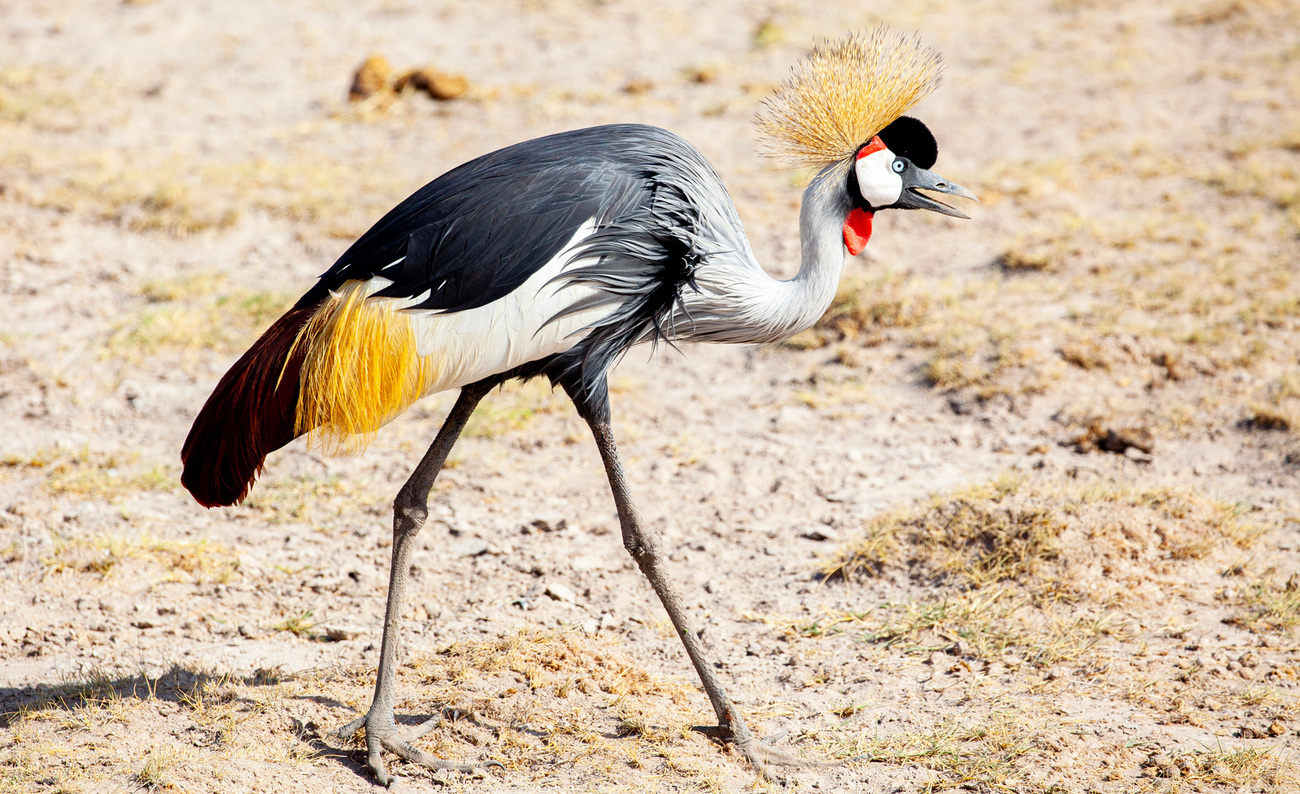
The grey crowned crane goes by many names—including the African crowned crane, golden crested crane, golden crowned crane, East African crowned crane, and crested crane—many of which refer to its stunning display of crown-like yellow feathers. The grey crowned crane inhabits a large range spanning from Kenya in East Africa all the way to the southeastern coast of South Africa, and its habitat is primarily savannahs.
Both male and female grey crowned cranes display fascinating dancing, bowing, and jumping behaviors during breeding season—but also throughout the rest of the year. They make honking sounds unlike any other cranes, and even immature birds will join in on the dancing.
Its unique beauty has placed the grey crowned crane on the flag of Uganda, and it is the country’s national bird. Sadly, the grey crowned crane is classed by the IUCN as endangered due to human activity and habitat degradation.
The aardvark is a burrowing, nocturnal mammal with a pig-like nose on a long, thin snout. It also has long, rabbit-like ears and a long tail. An aardvark can weigh up to 65 kilograms (145 pounds) and is up to about 2 metres (7 feet) long. They are found across much of Africa south of the Sahara Desert, and their habitat is savannah and semiarid areas.
An aardvark is sometimes called an anteater, but they are unrelated to each other. Anteaters are native only to South America, Central America, and the Caribbean, while aardvarks occur only in Africa. Like anteaters, aardvarks use their long snouts to eat ants and termites.
The aardvark is classed as least concern by the IUCN.
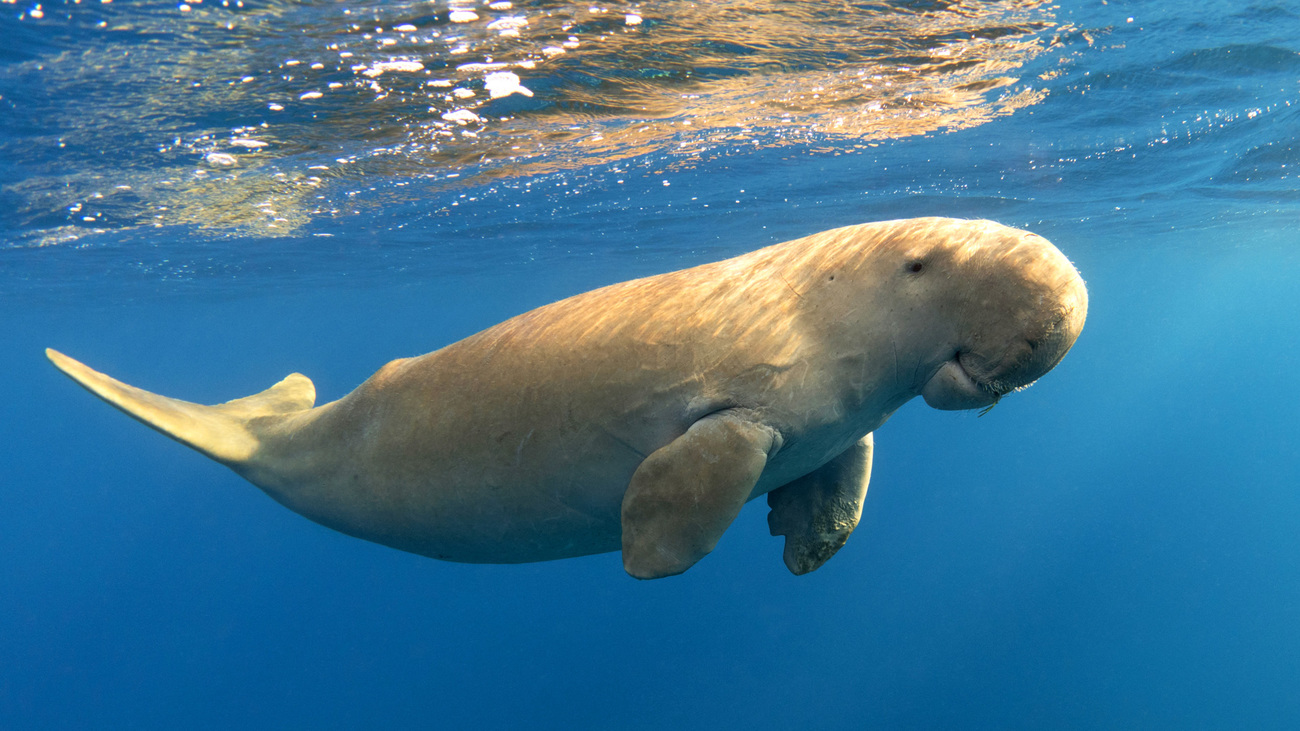
Often called sea cows, dugongs are large marine mammals. Though they are not the same species as manatees, they are related. They have round, blubbery bodies that are streamlined for swimming, a broad tail fluke, and paddle-like flippers. They are known for being slow and gentle, and they are believed to be the original inspiration for tales of mermaids and sirens. They hold a cultural significance for many indigenous communities.
Also native to Australia, Indonesia, Southeast Asia, and beyond, in Africa dugongs are found along the continent’s east coast and Madagascar’s west coast, as well as around the island nations of Seychelles and Comoros. Dugongs are classed as vulnerable by the IUCN, and their populations are unfortunately decreasing. Accidental capture and illegal hunting threaten dugongs, as well as degradation of their habitats and the seagrass meadows on which they graze.
Aye-ayes are a species of lemur native to Madagascar. They are the world’s largest nocturnal primates and live in forests and shrublands across the island. The most fascinating thing about aye-ayes is their odd way of finding food—they tap on trees with their long fingers to locate grubs before biting holes into the wood. Then they insert their fingers into the holes to pull the grubs out.
Unfortunately, aye-ayes are classed by the IUCN as endangered. Habitat loss is the primary threat to their survival, as the trees they inhabit are often cut down.
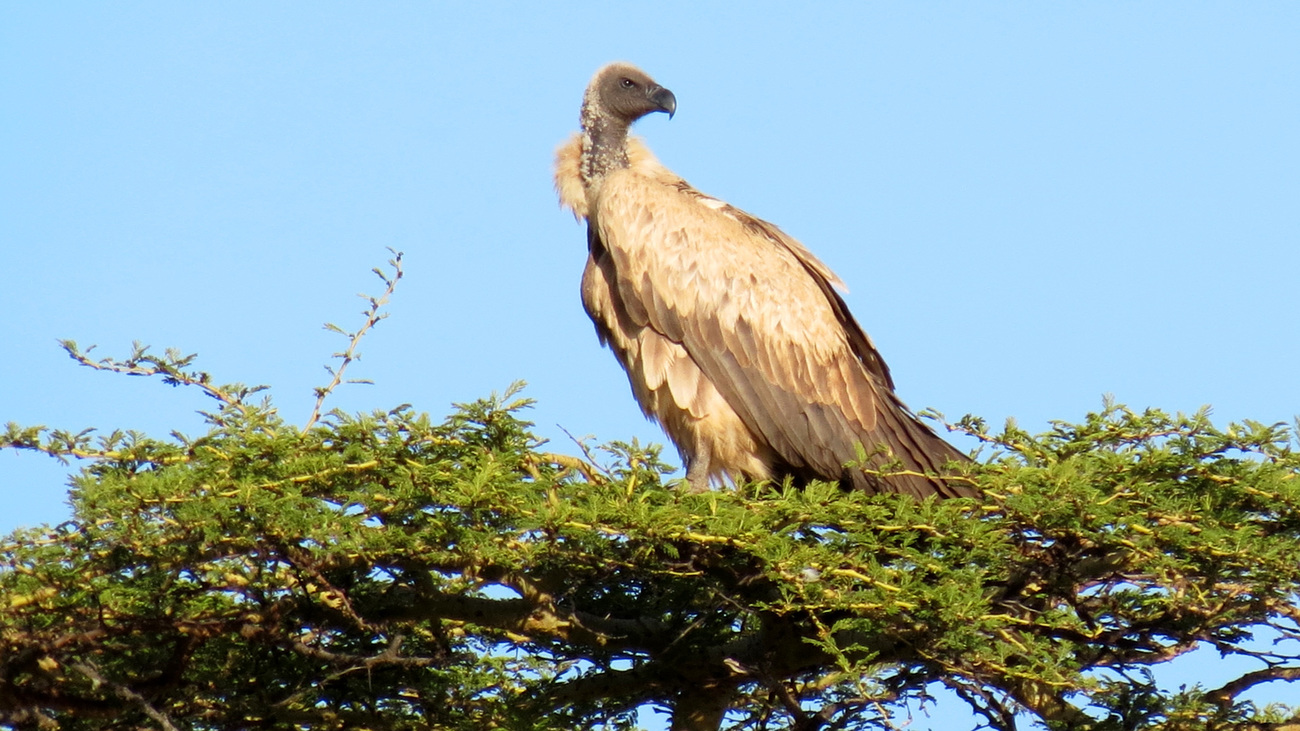
The white-backed vulture is a critically endangered bird with a wingspan of over 2 metres (7.5 feet). Like all vultures, it feeds on carrion, the carcasses of dead animals. It is easily recognised by the striking contrast between its dark-coloured face and wings and the bright white feathers on parts of its neck, legs, and back.
Despite being the most common vulture in Africa and found across the continent, the white-backed vulture is classed by the IUCN as critically endangered. It faces habitat loss and decreased availability of prey as well as deliberate and accidental poisoning. Accidental poisoning can occur when vultures ingest lead from bullets in their prey.
Also known as the forest giraffe, zebra giraffe, or Congolese giraffe, the okapi is a hoofed mammal that is about 1.5 metres (4 foot 11 inches) tall and is known for its striped legs that resemble a zebra’s pattern. Male okapis have horn-like bone structures on their heads called ossicones, which are also found on giraffes. The okapi habitat is canopy forests, and it is only found northeast of the Congo River.
Okapis eat tree leaves, buds, grasses, ferns, fruits, and fungi—like their giraffe cousins, they are herbivores. In fact, despite their huge size difference, giraffes and okapi are the most closely related species to each other, as the only living members of the Giraffidae family. Unfortunately, the okapi is classed by the IUCN as endangered. It does not adapt well to human settlement and is also hunted for its meat and skin. Human conflict around their habitat also poses a threat to their conservation.
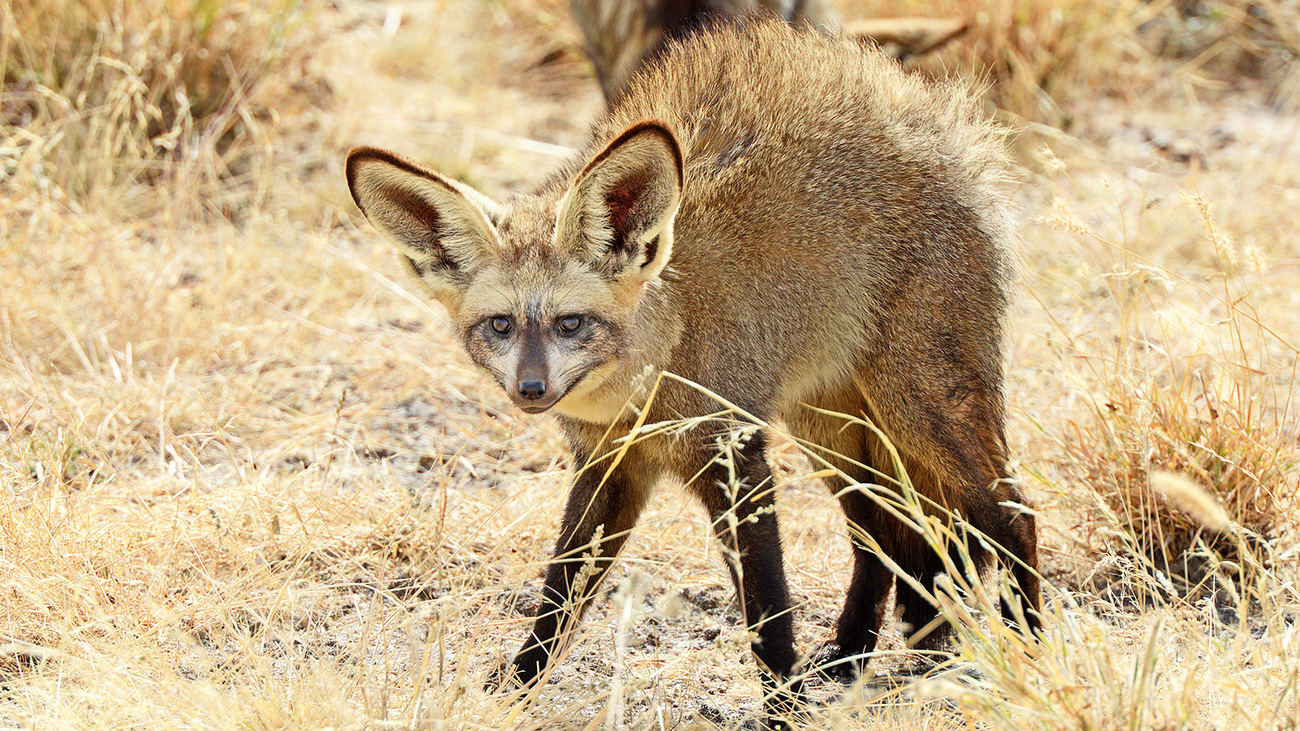
Found in the African savannah, the bat-eared fox is known for its distinctly large ears. These ears help distribute heat across their bodies and also help them locate prey. It is a relatively small mammal, growing about 80 centimetres (32 inches) long and weighing 3-4.5 kilograms (6-10 pounds). All foxes are considered canids—the family of dogs—and the bat-eared fox is the only truly insectivorous canid, meaning it eats bugs instead of meat.
To stay cool, these foxes often dig dens or lie down under trees. To hunt, they often form groups with other foxes, and they locate their prey primarily through sound. They are social rather than territorial animals, and they are typically monogamous in their mating habits, which is uncommon for mammals outside of primates.
Bat-eared foxes are classed as least concern by the IUCN.
The shoebill is a bird in the order Pelecaniformes (alongside pelicans, herons, and other water birds) known for its enormous, shoe-shaped bill. It can reach up to 1.5 metres (5 feet) tall. Its abnormally large feet help it stand on aquatic vegetation while hunting, and its large wings are well-adapted for soaring. Their bill is 20-25 centimetres (8-12 inches) long and 10-13 centimetres (4-5 inches) wide. They also have eyes ringed with bright yellow.
Their massive bill has a few different uses. For one, they engage in displays of bill-clattering as a means of communication, and they are also known to make moos, croaks, and whining noises, though they are mostly silent. Secondly, their bill’s size allows them to hunt much larger fish than other birds.
Shoebills are also known to stay very still for long periods of time and move very slowly. They are also quite sensitive to humans and may abandon their nests if humans disturb them. The shoebill is classed as vulnerable by the IUCN, with its primary threats being habitat degradation, hunting, disturbance, and capture for the wildlife trade.
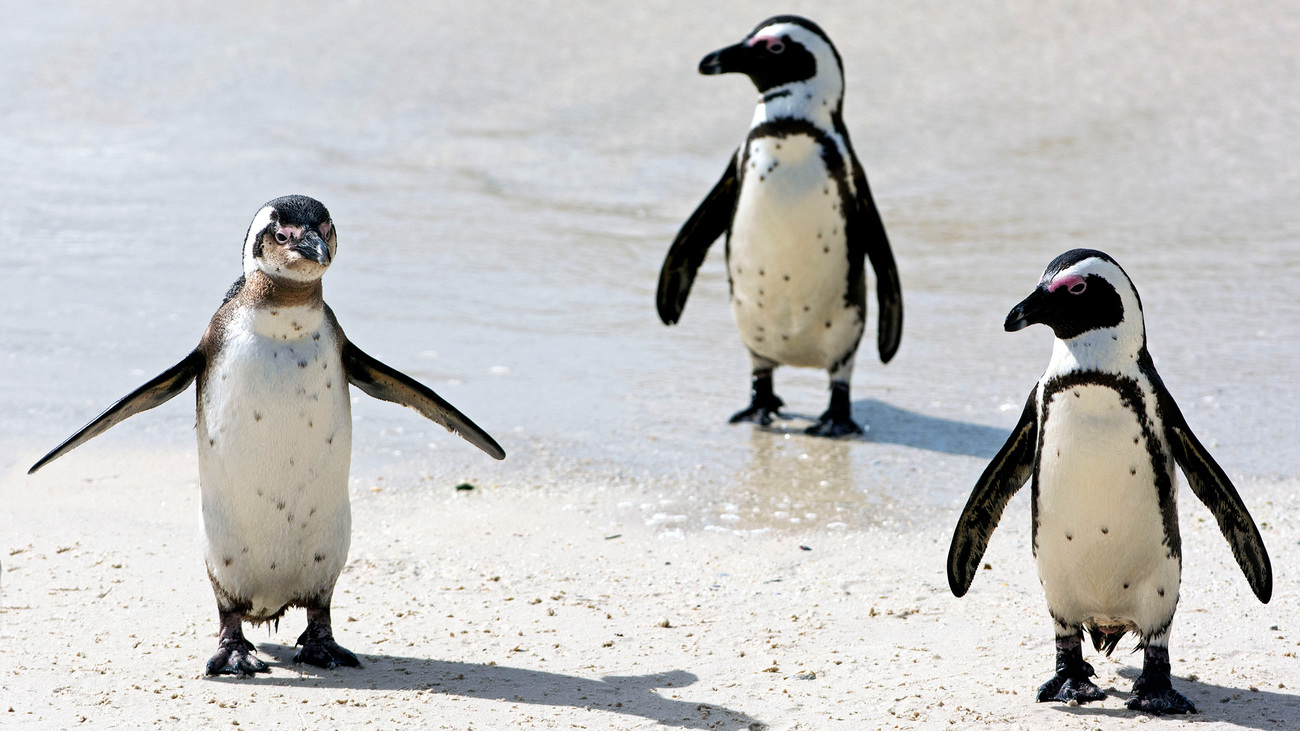
The African penguin is found along the southern coast of Africa. It’s 46-64 centimetres (18-25 inches) tall and eats fish, crustaceans, and squid. They are mostly black but have white feathers on their bellies (aside from a horseshoe shape) which extend behind and over their heads. They also have a bit of exposed pink skin above their eyes. Baby African penguins are grey.
African penguins pair-bond and mate for life. Adults lay clutches of two eggs—which they sometimes burrow in guano, their excrement—and the two parents take turns sitting on the eggs until they hatch. Then, at least one parent will guard the chicks while the other typically hunts for about a month. After this period, the chicks join a group called a crèche with other chicks, and both parents spend most of their time hunting.
In 2024, the African penguin was declared critically endangered. Their decline is largely attributed to food shortage, which is a result of environmental changes as well as commercial fishing activities.
The rufous elephant shrew, also known as the rufous sengi or East African long-eared elephant shrew, is a small, insectivorous (insect-eating) mammal. Despite their name, elephant shrews are not shrews or rodents—and of course, not anywhere close to the size of elephants at about 12 centimetres (5 inches) long.
Rufous elephant shrews have long, pointed, flexible snouts that they use to hunt their insect prey. Their habitat is the savannahs, forests, and scrublands of East Africa, including large parts of Kenya, Ethiopia, and Somalia. These small animals are hunted by birds of prey and snakes.
The rufous elephant shrew is listed as least concern by the IUCN.

Also known as the giraffe gazelle because of its extremely long neck, the gerenuk is a species of antelope found in East Africa. Its name means ‘giraffe-necked’ in Somali. They have a very small head but large eyes and ears, and males have horns. Their anatomy is quite strange in other ways, too—they mark their territory using a scented substance emitted from their eyes, and they have scent glands on their knees.
Gerenuks are herbivores and are hunted by wild dogs, cheetahs, leopards, lions, jackals, servals, honey badgers, caracals, and unfortunately humans. While it can withstand this threat of hunting to some degree, increasing encroachment into its habitat has caused its status to be near threatened.
Goliath frogs, also known as giant slippery frogs, are the largest frogs in the world. They are found in a small region on the western coast of Africa, in Cameroon and Equatorial Guinea. They reach sizes of 32 centimetres (12.5 inches) long and weigh up to 3.3 kilograms (7.2 pounds), making them comparable in size to some domestic cats. Goliath frogs are known to have carnivorous food preferences, eating fish, small mammals, other amphibians, worms, arachnids, crustaceans, insects, slugs, snails, and reptiles.
The IUCN classes goliath frogs as endangered. The major threat to their survival is hunting for consumption. Goliath frogs are often sold at bushmeat markets. They also have experienced significant habitat loss from agriculture.
Every problem has a solution, every solution needs support.
The problems we face are urgent, complicated, and resistant to change. Real solutions demand creativity, hard work and involvement from people like you.
Unfortunately, the browser you use is outdated and does not allow you to display the site correctly. Please install any of the modern browsers, for example:
Google Chrome Firefox Safari